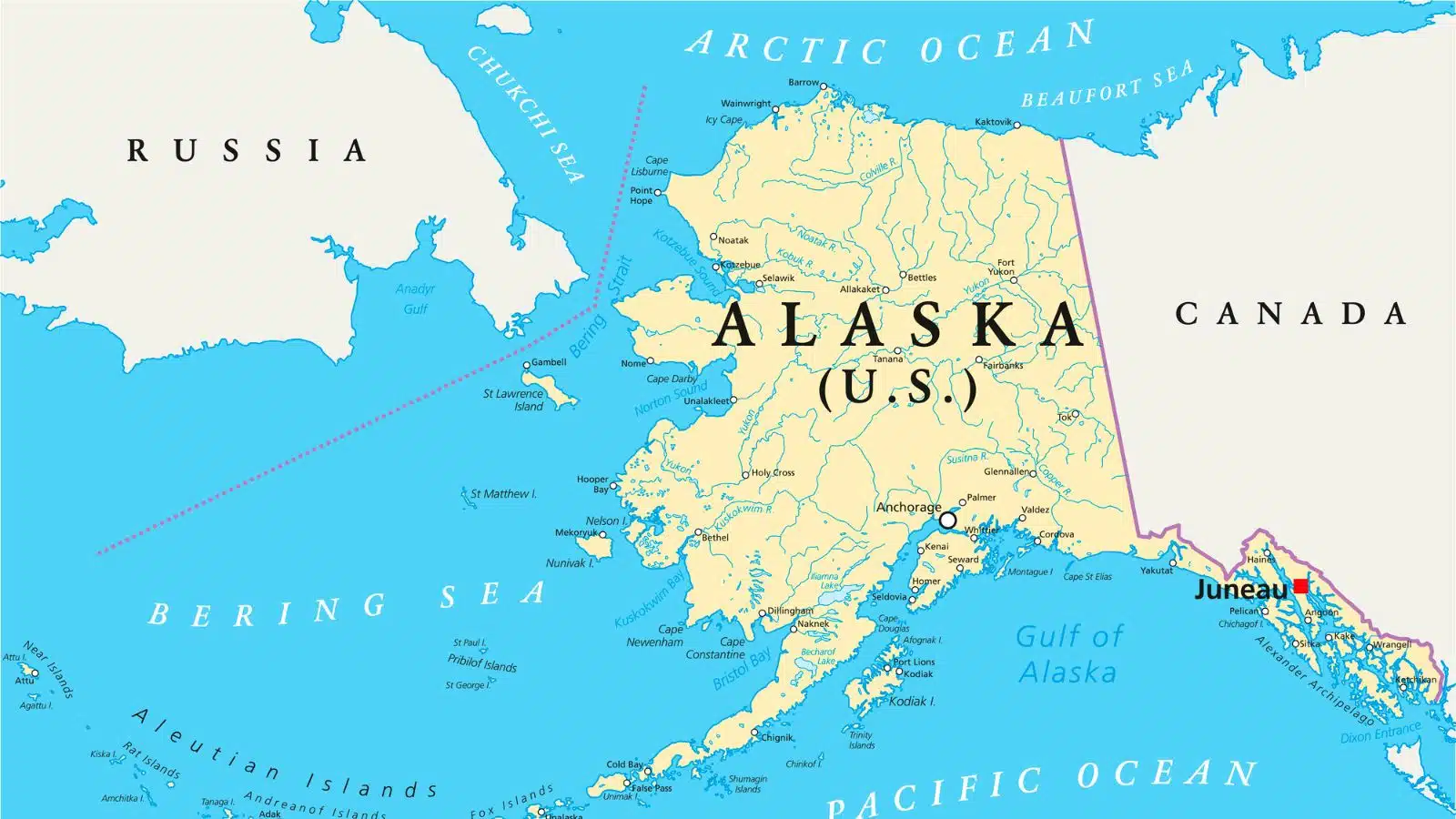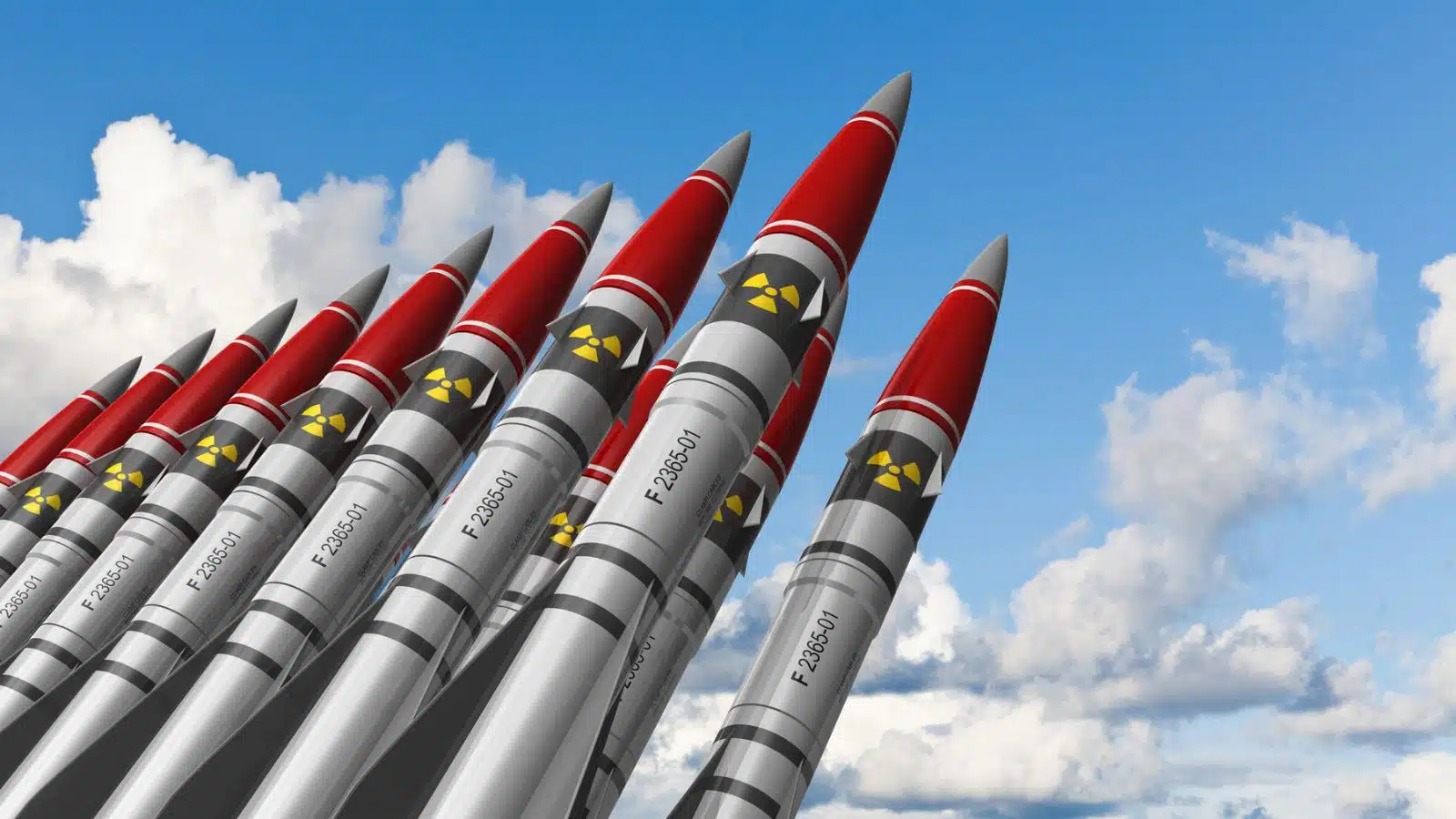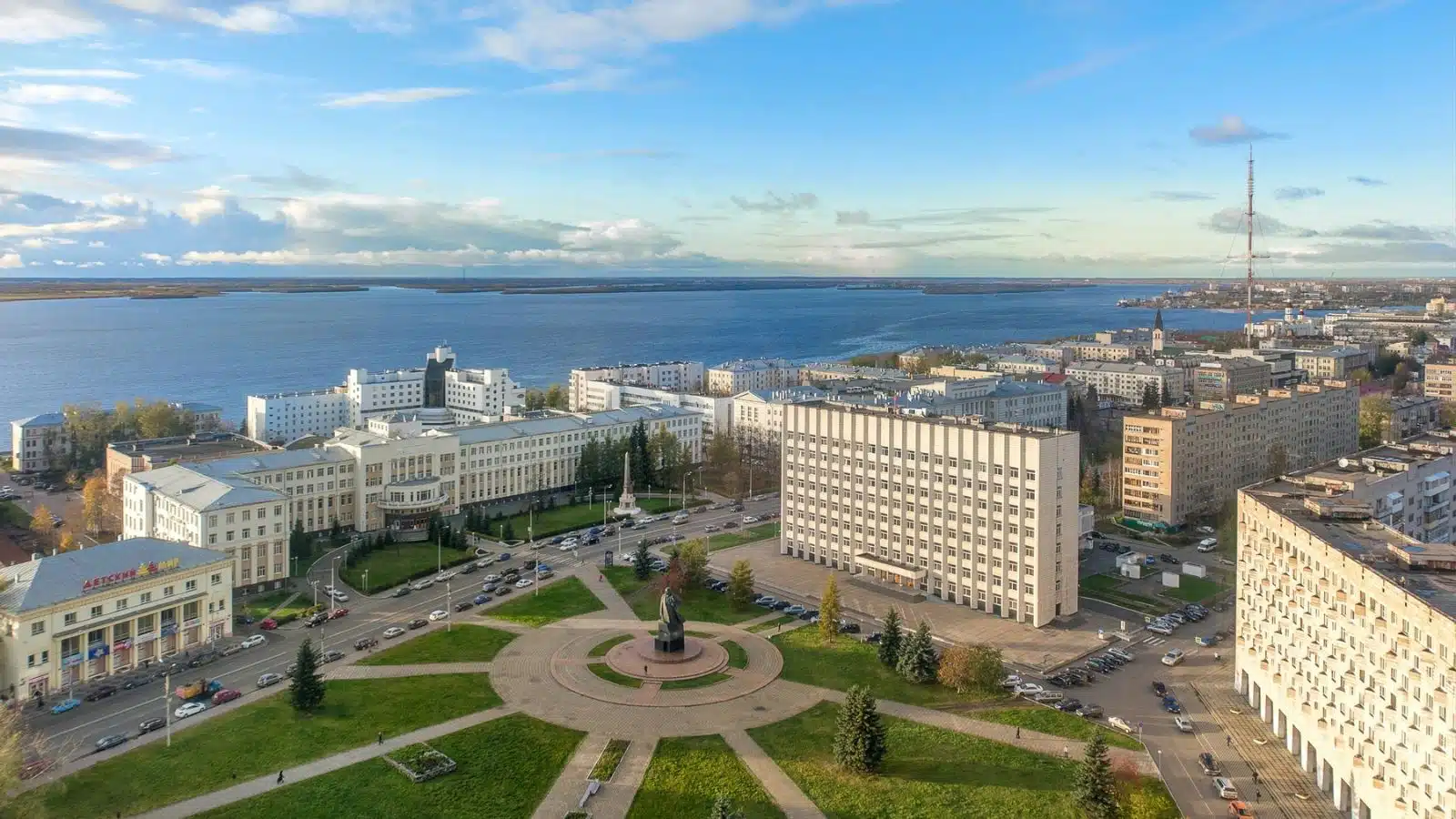Is it me, or does the world feel on the brink of something big and nasty? Research suggests it’s a common concern. In a 2022 study conducted by the American Psychological Association, 69% of adult Americans expressed a fear that we’re in the beginning stages of World War III…
At the forefront of some of these tensions are two superpowers with a turbulent history: Russia and America. Relations between the countries are as strained as they have been for decades, with some people claiming they’re engaged in a new Cold War.
But you knew this already. What you may not know are the following 10 facts about Russia, America, and their shared history, which may help set the current climate in context.
1. They’re Closer Than You Think

Russia and America (Alaska) are separated by the Bering Strait, which is just 51 miles wide at its narrowest point.
In the Bering Strait sit the two Diomedes Islands, Big Diomede and Little Diomede, which are less than 2.5 miles apart. In winter, the water between them freezes, creating a land bridge that, technically, means you can walk between the two countries.
2. Alaska Once Belonged to Russia

Until the mid-19th century, Russia owned Alaska. Their interest in the region had started roughly one century earlier. While they never developed any large settlements, it was recognized as Russian territory right up until 1867.
Following its defeat in the Crimean War, Russia needed money, so it offered to sell Alaska to the US. On October 18, 1867, it officially became US territory, costing $7.2 million.
3. Russia Had Settlements in Northern California and Hawaii

Alaska wasn’t the only part of North America where the Russians settled. Between 1812 and 1841, they established and operated Fort Ross (seen above) in modern-day Sonoma County, California. Then there was Fort Elizabeth, which the Russian American company built in 1817 overlooking Waimea Bay in Kaui, Hawaii, after making an alliance with High Chief Kaumualiʻi.
4. A Russian Man Prevented World War 3

On October 27, 1962, at the peak of the Cold War, the US Navy detected a Soviet submarine in Caribbean waters. It had a nuclear torpedo on board – and the crew had permission to use it.
In an attempt to force the submarine to rise so they could identify it, the US Navy started dropping non-lethal depth charges. Having been out of communication with Moscow, the submarine captain heard the explosions and assumed World War 3 had started.
He ordered the launch of the “special weapon.” However, as luck would have it, to give that order on this particular submarine, the protocol called for all three senior officers on board to agree. One of them, Vasili Arkhipov, refused. He single-handedly averted nuclear war in the process.
5. Another Russian Man Prevented Nuclear War in 1983

The date is September 26, 1983. Soviet Lt. Col. Stanislav Petrov is on duty when the computer in front of him displays one word in big red letters: launch. The Soviet’s early warning missile attack system is telling him the US has launched a nuclear missile at Russia.
He has a choice to make. Does he report it and trigger an instant retaliation from the Russians, or assume it’s a false alarm? He opted for the latter, and he was right. The system has mistaken the sun reflecting off clouds as a missile.
6. America Invaded Russia

World War One didn’t end for everyone on November 11, 1918. Thousands of American soldiers had been sent to Russia, where they continued fighting the Bolsheviks through a harsh and bloody Soviet winter. They landed at Arkhangelsk, shown above.
In a nutshell, the Americans had been sent there to support the so-called White Russians, who were intent on defeating the communist/Bolshevik Reds. The soldiers didn’t even know why they were there. It failed, hundreds of American troops died, and the entire affair went down in history as a pointless military endeavor.
7. The US Didn’t Recognize the Soviet Union for Almost 16 Years

At the end of 1917, under President Woodrow Wilson, the US ended diplomatic relations with Russia when the Bolsheviks entered power. Among other factors, they had refused to honor debts incurred by the Tsars, seized US property, and ended Russian involvement in WWI after signing a peace treaty with Germany in March 1918.
The US didn’t recognize the Soviet Union until 1933 when President Roosevelt re-established formal diplomatic relations.
8. West Berlin was a “Bone in the Soviet Throat”

After World War II, America, Great Britain, and France took control of the western part of Germany, and the Soviet Union took the east. However, this same four-way divide occurred in Berlin despite its location on the Soviet side of Germany.
Their presence became a major point of contention, eventually leading to the construction of the Berlin Wall. Nikita Khrushchev, the Soviet President, said West Berlin “stuck like a bone in the Soviet throat.”
9. There Was a Tank Stand-Off at Checkpoint Charlie

During the Cold War, Checkpoint Charlie was a key border crossing between East and West Berlin. Prior to the Berlin Wall, people could move freely between both sides of the city. On October 22, 1961, a US diplomat was on his way to the opera in East Berlin when East German border guards demanded to see his passport. He refused.
This triggered a series of events over the following days that culminated in a 16-hour armed stand-off, where dozens of American and Russian tanks faced each other on either side of the border. They only dispersed when President JFK convinced Nikita Khrushchev to withdraw.
10. Russia and American Had Tens of Thousands of Nuclear Weapons

Today, the world’s nuclear states possess approximately 13,000 nuclear warheads between them. The real number could be higher, but that’s the official figure. Either way, it represents a significant drop from Cold War Days. By the time the Soviet Union collapsed, America alone possessed around 30,000 nuclear weapons, and Russia had 40,000.
MORE ARTICLES LIKE THIS:
Europe’s 15 Most Beautiful Cities to Visit in Your Lifetime

European cities have history, charm, and aesthetic appeal. Here are 15 particularly beautiful examples that everyone should visit at least once!
EUROPE’S 15 MOST BEAUTIFUL CITIES TO VISIT IN YOUR LIFETIME
These 12 Stunning Destinations Are Criminally Underrated

Some of the world’s best travel destinations fly under the radar. Here are 12 such places that deserve more attention from tourists.